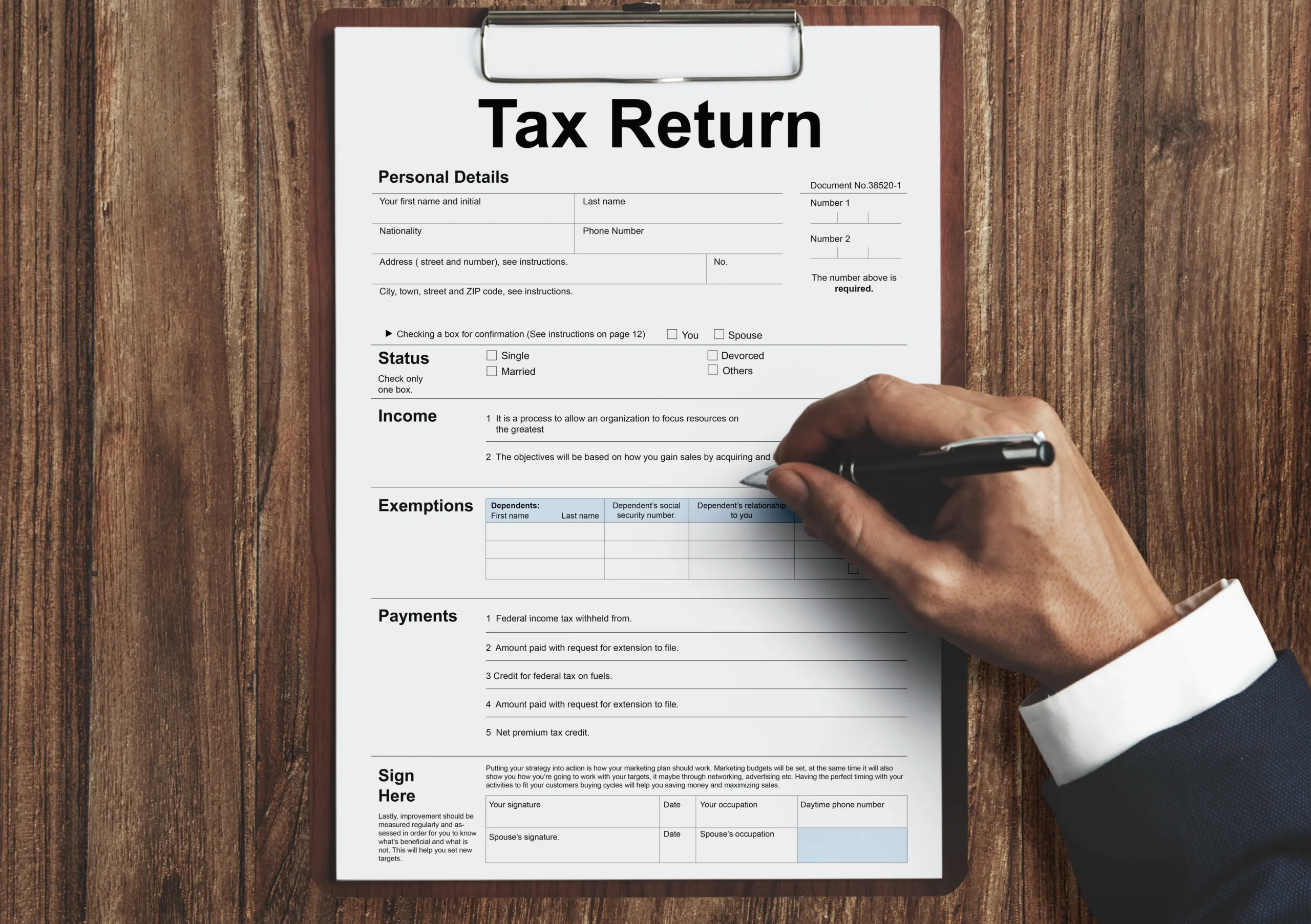Home > Tax Compliance > GST Return Filing Consultants
Shah & Doshi provide a professional GST return filing service in Mumbai which is the support for business that forms the core of our service through a proactive compliance approach that helps our clients evade the unwanted payment of the penalty. The team led by a CA at the helm gets every return made, GSTR-1, GSTR-3B, or annual returns, of any length, accurately, and on time. Having our specialists take care of your compliance, you are free to concentrate on your business development.
On-time Returns | No Penalties | CA Expert Support
Why Choose Shah & Doshi for GST Return Filing?
When the subject is GST return filing in Mumbai, the main things to be remembered are the accuracy and the timeliness. That is what makes us different from others:

-
Mumbai-Based Expertise:
Over 30 years of experience in the field of GST compliance in Maharashtra and local business laws.
-
CA-Led Oversight:
The checking by a chartered accountant of each and every return is done before submission.
-
Accuracy & Timeliness:
The effortlessly correct returns are filed before the due dates, as per our promise.
-
Personalized Service:
It is customized for your business, which can be a factory, a trading company, or a service provider.
-
Transparent Pricing:
We do not charge you for anything that you don’t know, and we provide you with a cost breakup any time you want.
-
Full Support:
It comprises reconciliation, audit notices, and annual GST return filing.
Our GST Return Filing Services Include
We facilitate GST filing of all categories with complete support from start to end.
- Monthly, quarterly and annual return filing (GSTR-1, GSTR-3B, GSTR-9, GSTR-9C)
- Return filing of non-operative or unutilized businesses
- QRMP scheme filing and advisory
- Input Tax Credit (ITC) reconciliation and optimization
- GST audit and compliance under notices or assessments
- Filing for regular taxpayers, composition dealers, e-commerce operators, NRIs, and distributors


Our GST Return Filing Process
Our process is designed to deliver accuracy and timeliness:
-
Document Collection & Review
Collect invoices, purchase details, and reconciliation data.
-
Data Validation
Confirm the details of inward and outward supplies along with the ITC claims.
-
Return Preparation
Based on your filing schedule, prepare and check the GSTR forms.
-
Submission & Acknowledgment
Returns are filed via the GST portal, and the ARN receipts are shared.
-
Follow-up & Compliance
Managing queries from GSTN, mismatched reports, or notices.
Benefits of Professional GST Return Filing
GST return is a document that consists of all the details of income/sales, expense/purchase of any tax-paying individual or company. One must file their GST return with the tax administrative authority, according to the GST return filing consultants. The net tax liability of a person is calculated by the tax authorities with a GST return. In the GST regime, any regular business with more than 5 crores of annual aggregate turnover is obliged to file 2 monthly returns and 1 annual return. This totals about 26 GST return filings in a year. However, under the QRMP scheme, the number of GST filings may vary quarterly for GSTR-1 filers. For them, the number of return filings in a year is 9 (this also includes GSTR 3B and annual return). Special cases such as composition dealers have separate returns that need to be filed. They are required to file 5 GSTR return filings in a year. Many businesses opt for GST return filing services to ensure accuracy and compliance.
Here is the list of all the GST returns to be filed (along with their due dates) as prescribed under the CGST Act:
| Return Form | Applicable Entrepreneurs | Description | GST Filing Due Dates |
|---|---|---|---|
| GSTR 1 | Taxable Suppliers / Normal Taxpayers | Contain details of taxable goods/services/both and that of outward supplies (sales transactions). No tax is required to be paid through this return | 10th of the next month |
| GSTR 2 | Taxable Recipients / Normal Taxpayers | Carries details of inward supplies (purchases) related to taxable goods/services, along with ITC claims | 15th of the next month |
| GSTR 2A | Taxable Recipients / Normal Taxpayers | Contains all the data of inward supplies of goods/services. The data is auto-populated and is a read-only return | - |
| GSTR 2B | Taxable Recipients / Normal Taxpayers | Is an auto-drafted ITC statement introduced by GSTN to simplify ITC claims | Generated on the 12th of every month |
| GSTR 3 | Taxable Individuals | Includes information on monthly returns based on finalization of inward and outward supplies along with total tax payable | 20th of the next month |
| GSTR 3B | Taxable Individuals | Contains summarized details of all outward supplies made, input tax credit claimed, tax liability ascertained and taxes paid | Monthly - 20th of the next month Quarterly - 22 or 24th of the next month |
| GSTR 4 | Composition Suppliers | Carries details related to GST return filing that is to be filed on annual basis by taxpayers who have opted for composition scheme | 30th April of next year |
| GSTR 5 | Taxable NRIs | Includes details of GST return filing for non-reisdent foreign individuals provided they are registered under GST and carry out transactions in India | 20th of next month |
| GSTR 5A | Non-Resident OIDAR Service Providers | Contains details of the services provided from a place outside India to a person in India to unregistered person or non-taxable customers. (OIDAR - Online Information and Database Access or Retrieval) | 20th of next month |
| GSTR 6 | Input Service Distributor | Contains details of all the documents issued for the distribution of input credit and the manner of distribution | 13th of next month |
| GSTR 7 | Registered Persons Deducting tax at source (TDS) | This form facilitates return filing for authorities initiating TDS. It includes information of TDS deducted, the TDS liability (payable and paid) and TDS refund claimed (if any). | 10th of the next month |
| GSTR 8 | E-commerce Operators who are required to collect TCS | Contains information on all the supplies made through the E-commerce platform and the TCS collected on the same | 10th of the next month |
| GSTR 9 | Taxable Individuals | Annual Return - It is a combination of all the monthly and quarterly returns filed during that year (GSTR-1, GSTR-2A and GSTR-3B) | 31st December of the next financial year |
| GSTR 9A | - | Consolidation of all the quarterly returns filed during the year | - |
| GSTR 9B | - | An annual return that contains details filed in GSTR 8 | - |
| GSTR 9C | Self-certified Reconciliation Statement | Reconciliation filed by all the taxpayers whose turnover has exceeded 5 crores in that financial year | 31st December of the next financial year |
| GSTR 10 | Taxable Individuals | Final Return - Filed by a taxable individual whose registration has been cancelled or surrendered | Within 3 months of cancellation of order |
| GSTR 11 | Individuals with UIN | Contains data of all the inward supplies received and claimed refund | 28th of the month following the month for which statement is filed |
Working with GST return filing consultants will ease the compliance burden for SMEs, and they can focus more on their business rather than getting occupied in GST return filing compliance procedures.
Late fee & Penalty for delayed GST return filing
Filing GSTR-3B is mandatory. Even if a business has no transactions during any month, it will still have to file a “NIL Return”.
From June 2021 onwards, the late fees will be levied and capped as follows:
- For Nil tax liability, the penalty is ₹20 per day and maximum ₹500
- For others the penalty is ₹ 50 per day and maximum charges may vary depending on the Annual Aggregate Turnover (AATO)
- The maximum penalty for AATO upto 1.5 crores is ₹2000
- The maximum penalty or AATO between 1.5 to 5 crores the charges are ₹5000
- The maximum penalty for AATO above 5 crores the charges are ₹10000
Interest is 18% per annum. It must be calculated by the taxpayer on the amount of outstanding tax to be paid. The time period will be from the next day of GST return filing to the date of payment.
In case of nil GSTR-3B filing, the maximum late fee charged will be Rs.500 per return (i.e. Rs. 250/- each for CGST & SGST). The maximum penalty is Rs. 10,000 (if the turnover is more than 5 crores). There is no late fee on IGST.
Hire Shah & Doshi as your GST return filing consultants to ensure prompt filing of GST returns without any delays, complications, or discrepancies.
Common Filing Mistakes to Avoid
Our experts help you prevent the most frequent GST return errors:
- Missing or incorrect return form
- Wrong invoice or supply details
- Missed ITC or mismatched reconciliation
- Not filing nil returns
- Ignoring GSTN notices or mismatch reports
By choosing Shah & Doshi’s GST return filing consultants, you eliminate these risks and ensure 100% compliance.
What Our Clients Say
Other Services Offered
- GST Registration Consultants in Mumbai
- Audit Under Income Tax Act
- QRMP scheme filing and advisory
- LLP Registration in Mumbai
- Private Limited Company Registration in Mumbai
Why Partner with Shah and Doshi for GST Return Filing?
Shah and Doshi is a trusted name in business consultancy and registration services. Partnering with Shah and Doshi for GST return filing ensures a seamless and efficient compliance process. Our team of professionals possesses extensive knowledge of GST regulations, guaranteeing accurate and timely submissions. Shah and Doshi’s commitment to precision, combined with their proactive approach, minimizes the risk of errors and potential penalties. Clients benefit from personalized attention, as the firm tailors solutions to individual business needs. Based in Mumbai, we provide proficient Audit and Tax Consultancy services performed by a team of Chartered Accountants, Company Secretaries, Cost Accountants, System Auditors, and Management Graduates with extensive professional experience. The financial expert team at Shah and Doshi understands various business processes, identifies challenges, and works to present our valued clients with an ideal and practical solution. Along with GST return filing, we offer a wide range of services that includes various Incorporation, Registrations, ROC Compliances, Tax Compliances, LLP Registration, Audit services, GST Registration, Private Limited Company Registration, Retainership services, Assessment, Scrutiny and many more.
Connect with us today to avail our GST return filing consultancy!
Expert GST Return Filing Consultants in Mumbai
Starting your business shouldn’t be complicated. Our CA-led team provides complete support for GST return filing, registration, and compliance in Mumbai, ensuring smooth processes from start to finish.
Phone: +91 9870611654 / +91 9819316484
Email: harshit@shahdoshi.com / ruchi@shahdoshi.com
WhatsApp: Schedule Quick Consultation
Office: Based in Mumbai
Blogs Related to GST Registration Consultants
GST Filing for Beginners – The Foolproof Guide to Getting It Right
Goods and Services Tax (GST) is a crucial part of business operations in India. It…
How GST Filing Will Evolve in 2025: Key Innovations to Watch
The Goods and Services Tax (GST) system in India has undergone significant transformations since its…
Why 70% of Businesses Struggle with GST Returns (And How to Fix It)
Managing Goods and Services Tax (GST) compliance is a crucial yet complex responsibility for businesses…
Common Mistakes to Avoid While GST Return Filing
Goods and Services Tax (GST) return filing is a crucial aspect of compliance for businesses in India.…
FAQs about GST Return Filing
For calculating GST, there is a standard formula:
GST Amount = (Original Cost x GST Rate Percentage) / 100.
Net Price = Original Cost + GST Amount
GST is calculated for acquiring a net price. Net Price is the sum of the tax or GST amount and the original cost.
GST return filing is generally an online process. However, the recipient can file the GST returns offline too. At Shah and Doshi, chartered accountants, GST return filing consultants can help any individual with the process.
Here are the steps for the GST return filing process:
- Step 1: Visit the GST portal (www.gst.gov.in)
- Step 2: A 15-digit number will then be issued based on the state code and PAN number.
- Step 3: Upload every invoice you possess; a reference number is issued against every invoice.
- Step 4: File the inward and outward returns and cumulative monthly returns. Note – all the errors are correctable.
- Step 5: Using the information section in the GST Portal, file the outward supply returns of GSTR-1 before or on the 10th of the month.
- Step 6: The recipient will obtain the outward supplies furnished by the supplier via GSTR-2A.
- Step 7: After obtaining the outward supplies, the recipient has to complete the verification process for the outward supplies and file details of debit or credit notes.
- Step 8: Provide the details of the inward supplies for the goods and services in the GSTR-2 form.
- Step 9: The supplier can reject or accept the details provided regarding the inward supplies made apparent in the GSTR-1A.
The tax applicable to the value-added goods and services at each stage in a supply chain is known as GST. The 4 fundamental types of GST are SGST (State Goods and Services Tax), UTGST (Union Territory Goods and Services Tax), IGST (Integrated Goods and Services Tax), and CGST (Central Goods and Services Tax). The rate of taxation under each type of GST at the buyer’s end is different.
The GST return filing frequency of some GST returns may differ if the taxpayer opts for the monthly payment of taxes and quarterly GST return filing.
- GSTR-5 – To be filed by the registered non-resident taxable person for the time period they carry out business transactions in India by the 20th of every month under GSTIN.
- GSTR-6 – To be filed by the 13th of every month by an Input service distributor (ISD).
- GSTR-7 – To be filed by individuals who require to deduct TDS (Tax deducted at source) under GST by the 10th of every month.
- GSTR-8 – To be filed by e-commerce operators under GST, who must collect tax at source by the 10th of every month.
QRMP (Quarterly returns with monthly payment) scheme is for all eligible taxpayers to file their returns via form GSTR-3B and form GSTR-1 quarterly and file their returns through a challan on a monthly basis. A business with a turnover of up to Rs. 5 crores in the preceding year can do the GST return filing quarterly. The taxpayer can choose to file on a monthly basis using form PMT-06.
Every GST-registered business must file quarterly, or monthly GST returns and an annual GST return based on the type of business. According to the current taxation system, one must complete the process of GST return filing 26 times a year, whereas business owners have to file GST twice every month and twice half-yearly.
Every entity with GST registration must file a GST annual return, irrespective of their business sales, activity, or profitability, during the GST return filing period. Every GST-registered entity whose aggregate turnover is above 2 crores during the financial year is eligible for GST annual return via forms GSTR-9C and GSTR-9 for GST annual return.
The primary GST slabs for all regular taxpayers are currently distinguished at 0%, 5%, 12%, 18% & 28%, with every slab varying for different types of goods and services. GST rates such as 3% and 0.25% are some lesser-used rates. Composition-taxable persons must pay GST at nominal or lower rates (5% or 6%, or 1.5%) on their turnover. The rates of TCS and TDS are 1% and 2%, respectively.
All the dealers and business owners, businesses registered under the composition scheme, and regular businesses complete the process for GST return filing according to the nature of their business and business transactions. GST return filing consultants are a big help for all business entities to complete this procedure.
Yes, there are penalties for missing GST return filing deadlines. If you fail to file your GST return on time, a late fee is imposed. Additionally, interest may be charged on any outstanding tax liability. The specific penalty amounts can vary based on the type of GST return and the duration of the delay. It’s crucial to ensure timely GST return filing to avoid these penalties and stay compliant with tax regulations.
Common errors during GST return filing include incorrect or incomplete information, mismatched invoices, wrong GSTIN, errors in HSN/SAC codes, and incorrect tax calculations. Filing under the wrong return category, omitting mandatory fields, and missing deadlines are also frequent mistakes. These errors can lead to notices from tax authorities and potential penalties. To avoid these issues, it’s advisable to seek assistance from GST return filing consultants. They can help ensure accurate and timely submission of your returns, minimizing the risk of errors and potential penalties.




